Table of Contents
Introduction
Shipping containers have become a symbol of innovation and creativity, transforming from mere cargo container carriers to versatile structures with endless possibilities. With durability, cost-efficiency, and a modular structure, shipping containers have found new purposes beyond mere storage shipping containers.
From eco-friendly homes to innovative retail spaces, these metal giants are transforming urban landscapes. Here, we’ll dive into some of the most ingenious uses for shipping containers, showcasing how people around the world are repurposing them for unique and sustainable solutions.
Below are 10 examples of how shipping containers have been put to use around the world:
Eco-Friendly Homes
Shipping containers have paved the way for storage for home projects solutions. Reusing these containers as homes significantly reduces waste and carbon emissions. These container homes are built from retired containers that might otherwise be scrapped, offering a second life to these sturdy structures.
Architecturally, container homes are highly customizable, allowing homeowners to arrange containers horizontally, vertically, or in combination to create multi-room or multi-story living spaces.
Examples:
In the U.S., container homes have gained popularity in states like California and Texas, where eco-consciousness is high. In Amsterdam, entire communities are built from stacked containers, providing housing for students and low-income families at reduced costs.
Beyond cost savings, container homes are remarkably resilient to weather conditions, making them suitable for various climates. They can be insulated, furnished, and adapted with solar panels, rainwater collection systems, and green roofs, creating an environmentally friendly, comfortable living space.
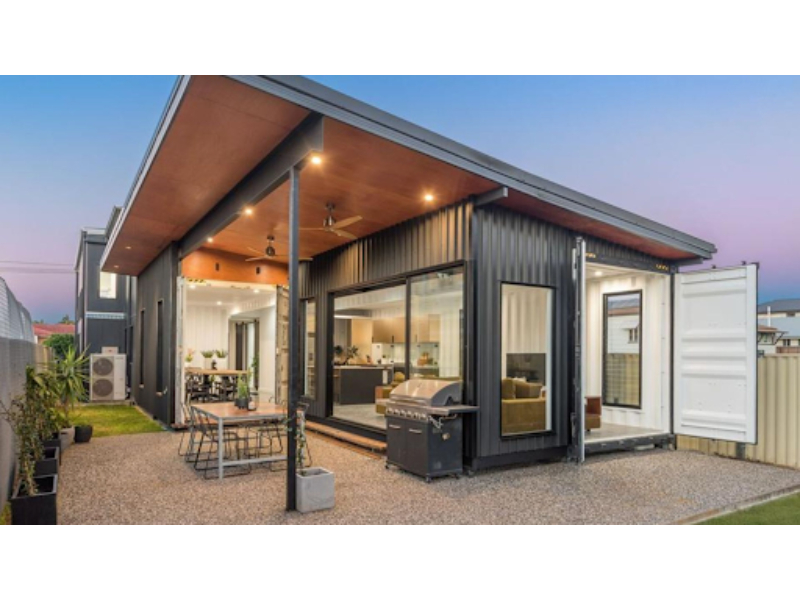
Pop-Up Shops and Retail Spaces
Shipping containers have revolutionized the retail world through the concept of pop-up shops. For entrepreneurs, pop-up retail offers an affordable, mobile, and attractive venue to showcase products temporarily without long-term rental commitments.
This trend allows retailers to set up shop quickly, reaching customers in high-traffic locations without significant renovation expenses.
Examples:
London’s Boxpark, a “pop-up mall” made entirely of shipping containers, houses various brands and eateries in a trendy, compact space. In New York, companies have created seasonal pop-up markets using containers, offering anything from artisanal foods to boutique fashion.
Containers are particularly advantageous for small businesses and startups, offering an opportunity to showcase products with minimal overhead. Their mobility and scalability also allow retailers to follow seasonal events, such as festivals and fairs, directly reaching their target audience.
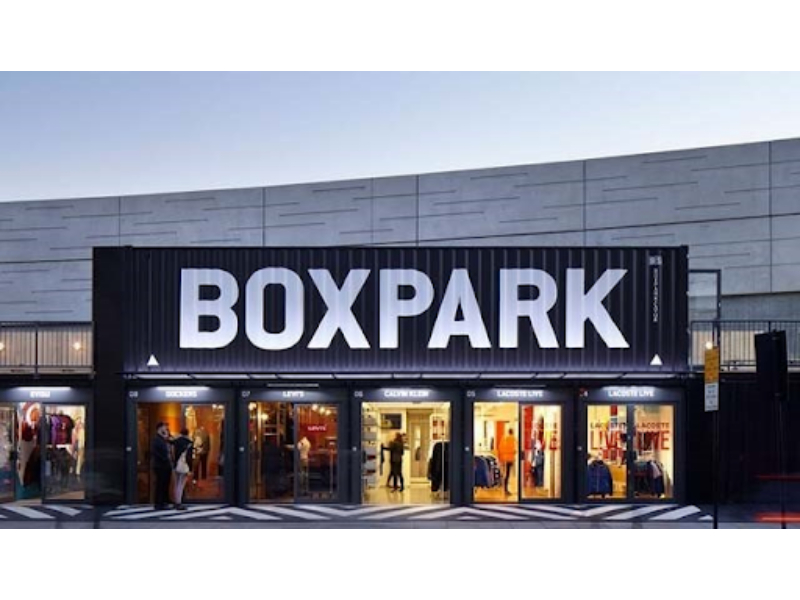
Unique Office Spaces
Containers are reshaping the way we think about office spaces, especially in bustling urban areas where space is a premium. Companies are repurposing shipping containers into sleek, industrial-style offices that offer both functionality and aesthetic appeal. Due to their modular design, container offices can be expanded, reconfigured, or even relocated, making them ideal for growing businesses.
Examples:
In Berlin, entire office complexes like the “C-Office” are built from containers, providing stylish and modern workspaces in the heart of the city. Similarly, companies in Silicon Valley have utilized container clusters for their agile, scalable properties, enabling them to grow their office space as the business scales.
Shipping Container offices appeal to tech startups and design firms that value an open, industrial aesthetic. They also allow companies to contribute to sustainability efforts, aligning with environmental goals while maintaining flexibility and practicality.
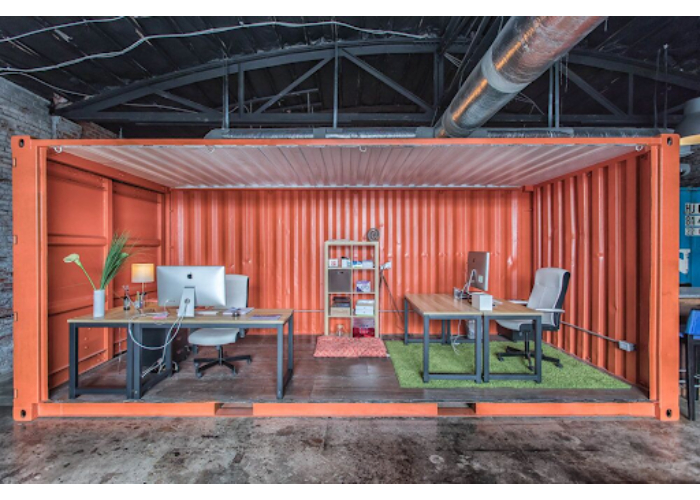
Food and Beverage Outlets
Shipping containers have transformed the dining landscape, offering a cost-effective and visually striking alternative to traditional buildings. They are widely used to house cafes, restaurants, and bars, providing a chic, modern setting that attracts customers.
Containers are customizable, allowing restaurateurs to create open-air or rooftop dining experiences, adding a unique touch to the dining experience.
Examples:
Container restaurants can be found in vibrant districts like Shoreditch in London and Portland’s food truck scene, where vendors create pop-up eateries serving gourmet foods. In Dubai, The Container Park hosts various food stalls and bars, drawing foodies with an array of culinary options in an urban, eco-friendly environment.
Containers are especially beneficial in the food and beverage industry for their cost efficiency, reduced construction time, and urban aesthetic appeal. Many also incorporate sustainable elements, like solar energy and recycled materials, making them attractive to eco-conscious patrons.
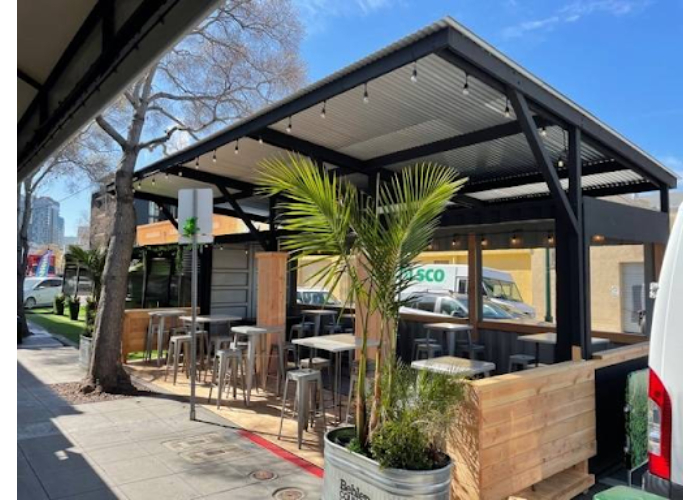
Emergency Housing and Disaster Relief Centers
In emergencies, shipping containers provide a vital solution for quick and durable shelter. Due to their sturdy construction, containers can be deployed rapidly, offering reliable housing in disaster-stricken areas where infrastructure has been damaged or destroyed.
Containers serve as shelters, medical stations, and even command centers, giving relief organizations a flexible and efficient option in crisis response.
Examples:
In earthquake-prone regions like Japan and Chile, container shelters are quickly mobilized to house displaced residents. After hurricanes, such as those in the Caribbean, relief organizations use containers to provide temporary housing and medical facilities, offering a sense of stability and safety to affected communities.
These container-based relief centers are often pre-fabricated, allowing for faster deployment and setup in affected areas. They are also cost-effective, durable, and can be equipped with basic amenities, making them a preferred option for NGOs and government agencies during humanitarian crises.
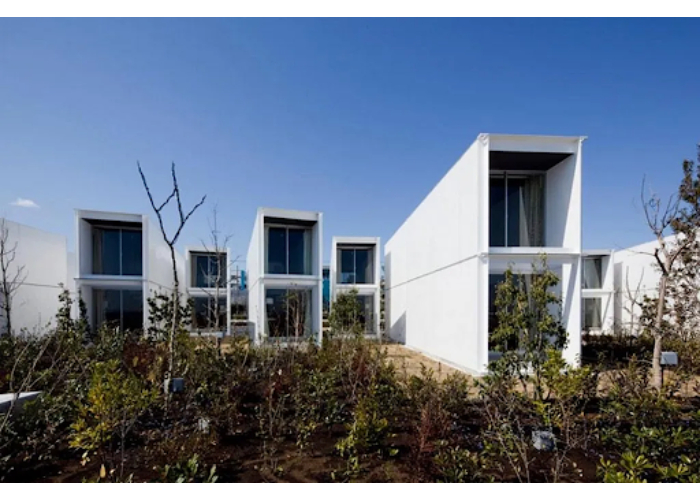
Schools and Community Centers
Shipping containers are being creatively utilized as schools and community centers, especially in regions where infrastructure development is challenging. Due to their modular structure, containers are perfect for creating functional, adaptable classrooms and meeting spaces, often in areas with limited resources.
These structures can be easily transported and set up quickly, allowing educational services to be extended to remote or underprivileged communities.
Examples:
In South Africa, container classrooms provide learning spaces for children in underserved areas, offering a safe and structured environment for education. In Kenya, the initiative “Container 254” uses repurposed containers to create community libraries and internet hubs, helping bridge the digital divide.
Containers’ durability and ability to withstand harsh environments make them ideal for such purposes. They can also be modified to include ventilation, windows, and insulation, ensuring a comfortable space for students and community members.
This solution not only addresses the immediate need for educational and community facilities but also supports sustainable building practices, making it a preferred choice for non-profit organizations and local governments.
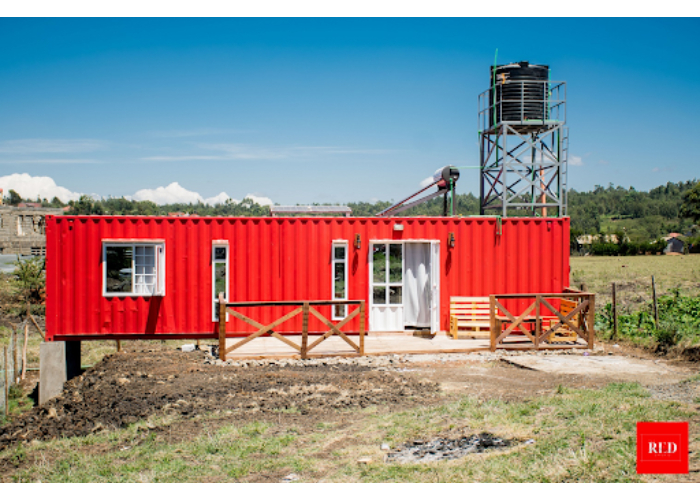
Art Galleries and Exhibition Spaces
Containers offer a flexible, modern space for art galleries and exhibitions, allowing artists and curators to bring creativity to unexpected locations. Their portability and durability enable art installations in unconventional venues, attracting a broader audience and creating unique exhibition environments. Moreover, these spaces are adaptable, making it easy to rearrange or relocate exhibitions as needed.
Examples:
In cities like Paris and Berlin, pop-up container galleries bring contemporary art to the public, showcasing sculptures, paintings, and digital media. The “Container Art” project in Italy transforms containers into portable art spaces, touring various cities to engage diverse audiences.
With the ability to stack or rearrange containers, organizers can create customized spaces that enhance the viewing experience. These galleries often attract visitors looking for fresh, innovative spaces, and the unconventional setup offers artists a unique canvas for experimentation.
Container art galleries also tend to have a minimal carbon footprint, aligning with the values of both artists and environmentally conscious visitors.
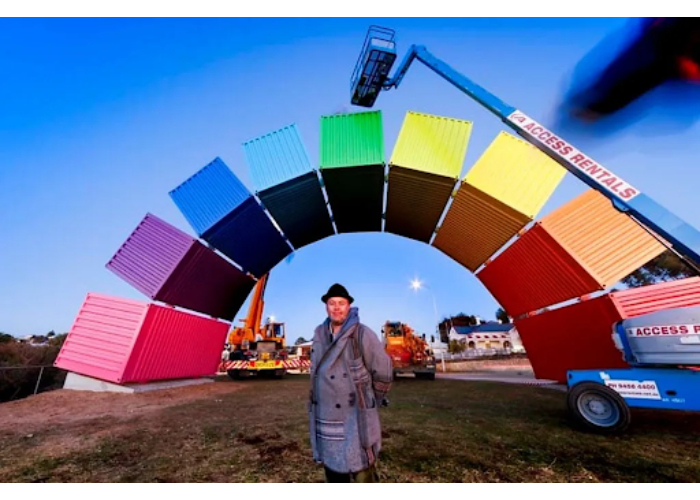
Mobile Farms and Greenhouses
In urban agriculture, containers are being transformed into vertical farms and greenhouses, supporting sustainable farming practices in cities with limited space. These container farms provide controlled environments for growing vegetables, herbs, and even fish, allowing urban communities to access fresh produce year-round.
Equipped with hydroponic or aquaponic systems, container farms can maximize crop yield in a small footprint, making them an efficient solution for food production in urban settings.
Examples:
Companies like Freight Farms and Square Roots in the U.S. use shipping containers to grow fresh, local produce in city environments, reducing the need for long-distance transport and decreasing carbon emissions.
In Singapore, container farms provide leafy greens and herbs to restaurants and retailers, promoting a more sustainable food supply chain.
With technological advancements, container farms are optimized for specific climate conditions and can be monitored remotely, ensuring ideal growth conditions. The containers’ insulated walls and modular build make them an ideal setup for farming, contributing to local food systems and reducing food insecurity in urban and rural areas alike.
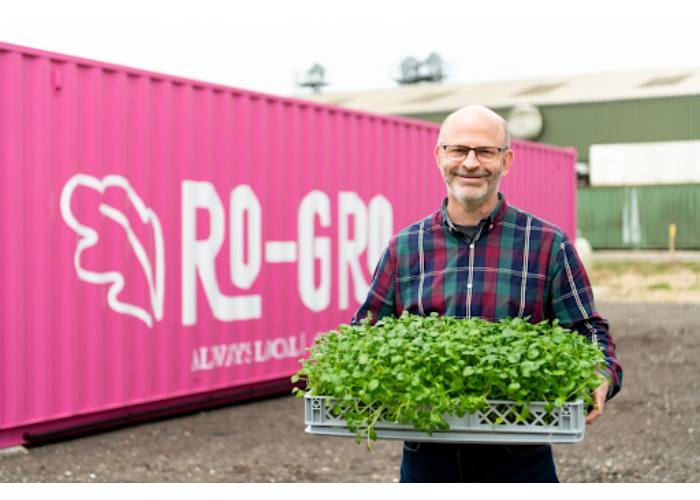
Swimming Pools and Recreation Centers
For more luxurious and recreational use, shipping containers are being transformed into stylish swimming pools. Container pools offer an affordable and eco-friendly alternative to traditional in-ground pools, with minimal installation requirements and reduced construction time.
Find the perfect size container pools are becoming popular in private homes, hotels, and public recreation centers.
Examples:
In Australia, container pools are used in hotels and resorts, offering guests a unique experience with their sleek, industrial aesthetic and easy installation.
Container pools come with the option of built-in filtration, heating systems, and custom interiors, making them a customizable addition to any outdoor space. Their portability allows owners to relocate the pool if needed, making them a flexible option for seasonal or temporary installations.
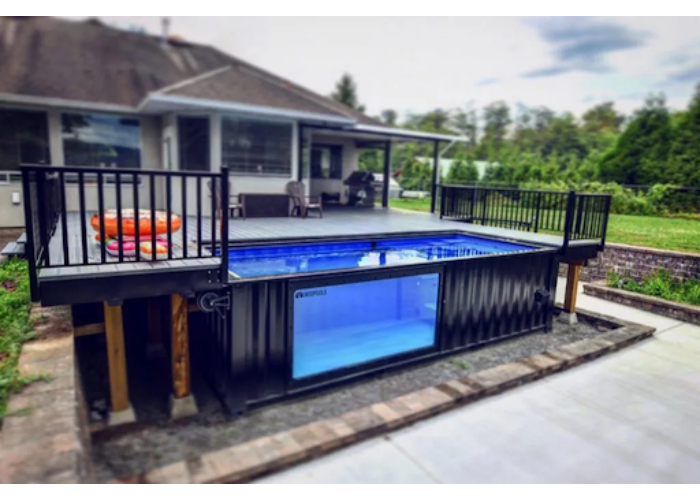
Tourist Accommodations and Hostels
The hospitality industry has embraced shipping containers as an innovative approach to sustainable lodging. Container hotels and hostels are cropping up worldwide, offering eco-conscious travelers a unique, minimalistic stay.
These accommodations are particularly popular in scenic or remote areas, where traditional construction would be costly or environmentally disruptive.
Examples:
In Scotland, the “Eco-Friendly Bothies” offer cozy, minimalist stays within stacked container lodges, surrounded by natural landscapes. In Sri Lanka, the “Container Hostel” attracts backpackers with its colorful, creative design and emphasis on sustainability.
Container hotels in the Netherlands and the United States offer stylish, modern rooms built entirely from upcycled containers, often located in urban centers or scenic rural areas.
Container accommodations appeal to a new generation of travelers who prioritize sustainability and affordability. These lodgings can be customized with amenities like balconies, rooftop lounges, and modern interiors, blending comfort with an industrial aesthetic.
Moreover, container hotels are quick to assemble, providing a low-impact, low-cost alternative to traditional hotel structures, all while attracting visitors with a desire for eco-friendly travel options.

Conclusion
The creative uses of shipping containers highlight the versatility and sustainability of these once-utilitarian structures. As we’ve seen, from eco-friendly homes to innovative farms, these metal giants have transcended their original purpose to shape the future of architecture and design.
By reimagining containers as living spaces, workplaces, and artistic venues, we’re not only conserving resources but also embracing a trend that reflects our growing commitment to sustainable development.
Whether for businesses, artists, or eco-conscious travelers, repurposed shipping containers present limitless possibilities. This global trend represents a shift toward greener, more efficient ways to utilize space and materials, offering an inspiring blueprint for future innovation.
Looking for 20-ft, 40-ft, or Office Containers? Get Your Free Quote Today!
FAQs
Why are shipping containers becoming popular in architecture?
Shipping containers are durable, cost-effective, and adaptable, making them suitable for a variety of structures. Their modular nature allows for flexibility in design and expansion, which has made them popular for innovative architectural projects worldwide.
How durable are container-based structures?
Built from corrosion-resistant steel, shipping containers are designed to withstand harsh weather and long-term exposure. When properly maintained and modified, they can last for decades as residential or commercial spaces.
Are container homes and businesses sustainable?
Yes, container projects are sustainable because they repurpose existing materials, reducing waste. They also require less energy to construct than traditional buildings, which contributes to a lower environmental impact.
What are the limitations of using shipping containers for sale construction?
Some limitations include insulation challenges, height restrictions, and the need for structural modifications. However, with professional design and engineering, these challenges can be effectively managed.
How can I start a shipping container project?
To start, research zoning regulations and consult with a designer experienced in container architecture. Once you have a clear plan, sourcing containers, budgeting, and securing permits are the next steps in bringing your project to life.
